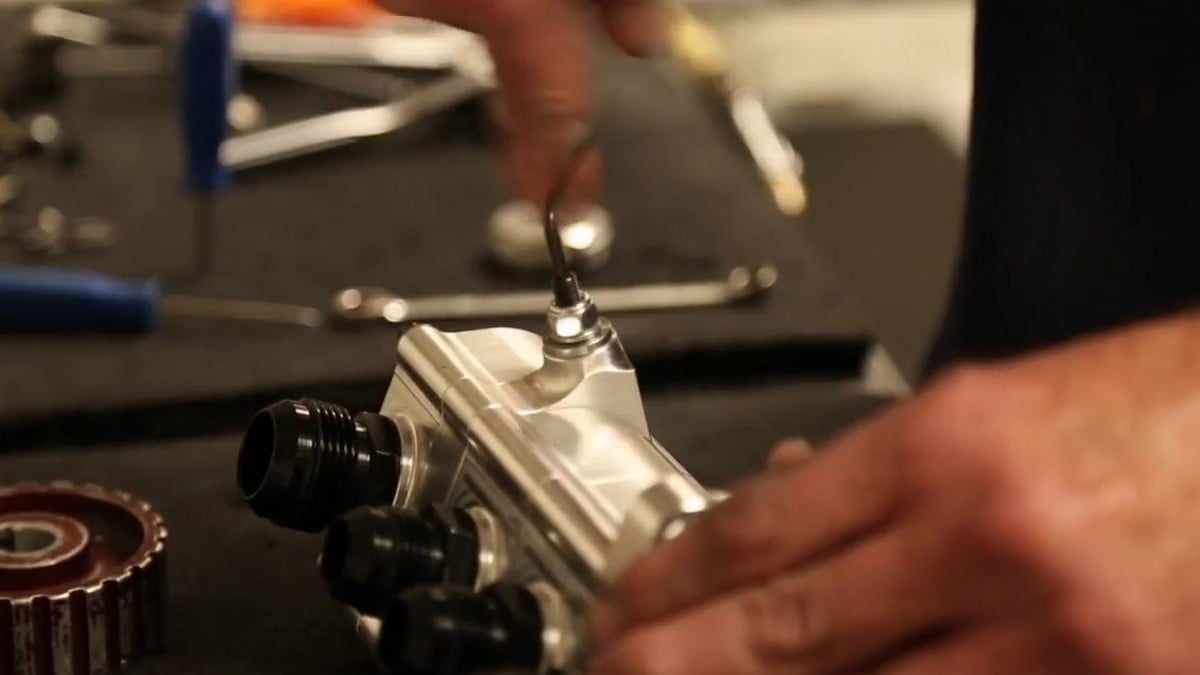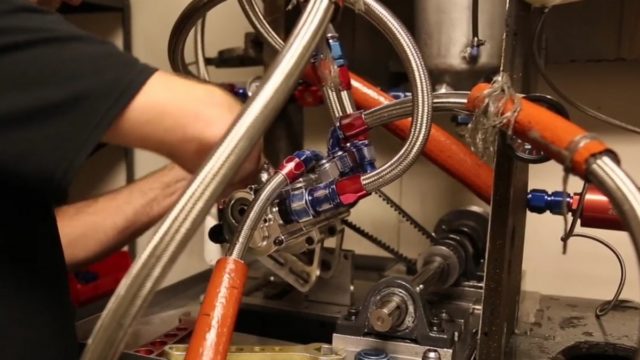Dry sump oil pumps are put through tremendous stress under load in a racecar, so they have to be assembled with accuracy and be of the utmost quality in construction. Peterson Fluid Systems [1] has dry sump pumps that help lubricate some of the world’s quickest race cars, and they work very hard at making sure their units are built to deal with any level of abuse. This video peels back the curtain on the assembly and testing process of their dry sump pumps to show what level of quality they look for.
The standard dry sump oil pump is made up of several different stages; they’re filled with rotors that help circulate the oil through the system. During the assembly process, the lobes are stacked on top of each other based on their purpose and assembled with precision by the team at Peterson. Every pump is put together by hand, goes through multiple steps of quality control, and is tested before it goes into Peterson’s inventory.
Peterson’s Pat Haberkorn is able to shed some additional light on the testing process shown in the video.
“Every pump is tested with 100 psi of pressure at 140 degrees of oil temperature for about 20-30 minutes. During this process, the pump techs are monitoring the oil flow (via a flow meter), bypass adjustability, as well as monitoring the pump for any leaks. In the last step of the testing process, the oil feed is shut off to each section of the pump and the vacuum numbers are recorded as well as the amount of time it takes for the vacuum to bleed down. This measurement tells us how well the rotor is sealed, and is also guaranteeing that the pump will meet our performance expectations once installed on an engine.”
Make sure you check out the entire video to see what all goes into putting one of these stout pumps together and how they’re tested before ever being bolted up to a racecar!


